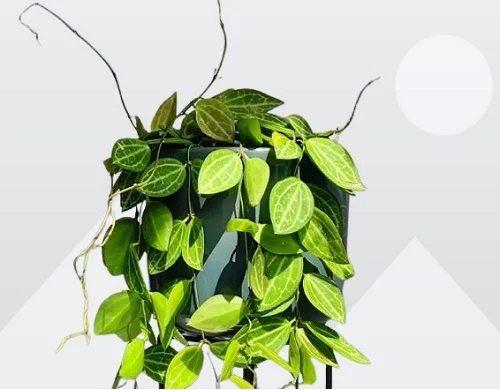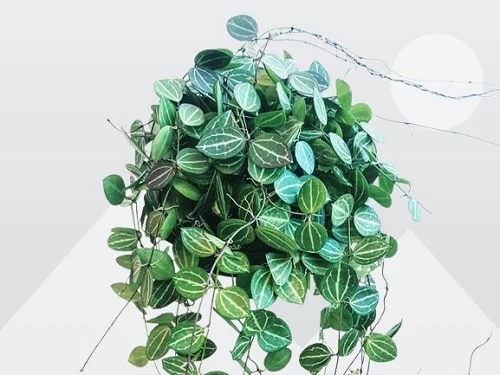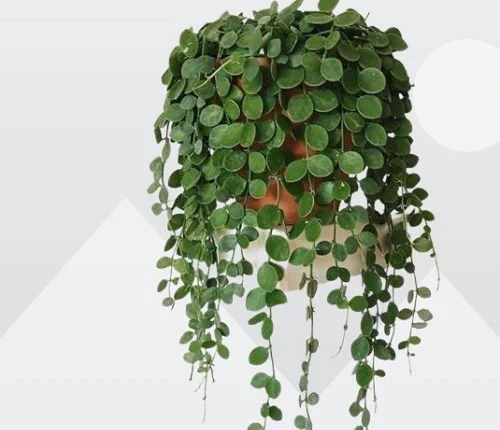11 Causes of Dischidia Plant Dying and How to Revive It
Some links in this post may be affiliate links
A Dischidia Plant may die due to root-rot, too little light, pest infestations, inconsistent watering, temperature stress, salts buildup, nutrients deficiency, poor quality soil among others.
Discidia are easy to grow indoors and outdoors. Generally, Dischidia Plants grow best in bright light with some morning sunshine, average warmth, moderate humidity and moderately moist, rich, well-drained soil with two feedings in the growing season.
Popular Discidia varieties for indoor growing include Dischidia nummularia (String of Nickels Plant), Dischidia ovata (Watermelon Dischidia) and Dischidia ruscifolia (Million Hearts Plant) among others.
When the right growing conditions are missing, Discidia may begin to die. If your Dischidia is dying, don’t worry. In this guide we have discussed 11 reasons why your Dischidia Plant is dying and how to fix it, so you can bring your plant back to life.

11 Reasons why Dischidia Plant is Dying & Remedies
1. Root-rot Disease
Dischidia Plants are prone to root-rot which is brought about by soggy soil. The disease is characterized by wilted, discolored leaves, corky swellings under the leaves, dropping leaves and eventual death of the plant.
Soggy soil reduces oxygen concentration in the soil which causes the roots to die. Once the roots die, they cannot take up water and nutrients to the leaves. The leaves begin to die and eventually drop.
How to Fix It
Slip your Dischidia out of its pot and inspect the roots; brown-black, mushy roots indicate root-rot, trim them off.
Treat the healthy roots with a fungicidal solution as recommended by the manufacturer.
Disinfect the pot or use a fresh pot to repot the plant in fresh well-draining soil.
Withhold watering to keep the plant dry for about 7 days before you can resume watering.
To avoid getting soggy soil, use a pot with a drainage hole and free-draining soil.
Reduce watering in fall and winter to maintain the soil slightly moist as growth is minimal at this time.
2. Too Little Light
Sufficient light is needed for making food that is required for energy and growth. Too little light implies that the plant cannot make enough food for energy and growth therefore it begins to drop its leaves and finally dies.
How to Fix It
Cut back the bare stems to encourage growth of new foliage and move your Dischidia Plant to a brighter spot where it will receive bright light with at 4-6 hours of morning sunshine or instal grow lights if you do not have adequate lighting in your home.
Regularly turn the pot to ensure that the plant absorbs enough light for photosynthesis from all sides.

3. Pest Infestations
Dischidia Plants are prone to spider mites, scale insects, aphids and mealybugs which attack the new growth from where they suck the plant sap. This causes the plant to become dehydrated and results in wilting and dying.
How to Fix It
Isolate the affected plant to prevent spread to the other plants.
Treat the plant with neem oil or insecticidal soap as per the manufacturers' instructions.
Regularly inspect the plant for the pests and take timely control measures.
Keep the plant well pruned to discourage the pests.
4. Poor Quality Soil
Poor quality soil easily becomes compacted or soggy which will negatively impact the growth of the plant. Soggy soil can lead to rotting, yellowing, leaf drop and death of the plant.
How to Fix It
Pot your Dischidia Plants in loose, sandy, well-draining soils. Cactus and succulents potting mixes are ideal for these plants as they are loose enough to allow proper drainage, therefore, do not get soggy.
5. Inconsistent Watering
Both underwatering and overwatering are detrimental to the growth of the plant. Underwatering results in wilting, yellowing, leaf drop and eventual death of the plant.
On the other hand, overwatering leads soggy soil which causes rotting, yellowing, leaf loss and plant death if the situation is not corrected.
How to Fix It
Check the soil condition by inserting your index finger into the soil and feeling the soil.
If the soil feels dry, immediately water the plant thoroughly until the water comes out through the drainage holes and it should recover.
Thereafter, water when the top 2-3 inches of soil dry out but do not allow the soil to dry out completely.
Do not water on a schedule to avoid either underwatering or overwatering.

6. Temperature Stress
Extreme temperatures; either too high or too low brought about by drafts will affect the normal functioning of the plant systems.
Too high temperatures will cause excessive loss of water leading to wilting, leaf drop and eventual death of the plant. Too low temperatures will lead to stunted growth resulting in yellowing, leaf loss and plant death.
How to Fix It
Keep your Dischidia Plant away from sources of drafts like windy doors, drafty windows, AC units, hot air vents, stoves and others.
Maintain a warmth of 18-300C for optimal growth of the plant; a room temperature that is comfortable for you is ideal for this plant.
7. Too Cold Water
Dischidia Plants are native to the tropical regions where the temperatures remain constantly warm. Therefore, constantly watering these plants with too cold water will shock the plant, causing it to stop growing and begin to die.
How to Fix It
Water Dischidia with water that is at room temperature to avoid cold shock and eventual death of the plant.
8. Salts Buildup
Accumulation of salts in the soil will cause the roots to die due to fertilizer burn. This implies that the roots cannot take up nutrients and water for making food needed for growth and energy. Without, adequate food the plant begins to drop leaves and eventually dies if the situation is not corrected.
How to Fix It
Dischidia Plants are not a heavy feeders so take care not to overfeed the plants.
Use chemical free water like rain water or filtered water to prevent buildup of salts in the soil.
To reduce salts buildup, regularly flush out excess salts by running a stream of water through the soil until it comes out through the drainage hole. Repeat the process several times to get rid of as much salt as possible.
9. Nutrients Deficiency
Underfeeding means that the plant is not getting enough nutrients need for growth and energy. Lack of nutrients in the actively growing tips causes nutrients to be withdrawn from the older lower leaves which begin to yellow, die and drop.
How to Fix It
Feed your Dischidia with a slow release fertilizer twice during the growing season (spring and summer). Take care not to underfeed and follow the instructions on the label of the plant food.
10. Being Pot-bound
When the Dischidia Plant is pot-bound, the roots have filled the pot and there is very little soil to hold water when you water the plant. Therefore, the roots have no access to water and nutrients required for making food for growth. Without enough food the plant begins to die from the leaves which turn yellow and drop.
How to Fix It
Check the bottom of the pot for roots growing through the drainage hole and repot the Dischidia Plant into a pot one size larger than the current one.Take a look at these succulents pots on Amazon.
You may also divide the plant into several sections and plant the sections in individual pots to propagate new plants.
11. Hot Sunshine
Exposing your Dischidia Plant to hot sunshine will cause dehydration and sunscorch. This will result in wilting and eventual death of the plant if not corrected.
How to Fix It
Do not expose your Dischidia to hot sunlight before acclimating it. Gradually expose it to a little brighter light every day over a period of 2 weeks.
Conclusion
A dying Dischidia plant can often be saved with the right adjustments. By identifying the cause early and following these easy fixes, you can restore your Dischidia to a healthy, thriving state.
Frequently Asked Questions
1. Can Dischidia grow in low light?
Dischidia can tolerate low light, but it requires bright indirect light for best growth.
2. How often should I water my Dischidia?
Do not water on a schedule. Water Dischidia when the top 2-3 inches of soil to dry out. Avoid overwatering at it can cause rotting, yellowing, leaf fall and death of the plant.
3. Can Dischidia survive without soil?
Yes. Dischidia is an epiphyte, meaning it can grow in sphagnum moss, coconut husk, or mounted on bark with proper humidity.
4. Why is my Dischidia losing leaves?
Leaf loss in Dischidia can be caused by overwatering, underwatering, soggy soil or sudden temperature changes. Adjust the care accordingly.
5. Why are my Dischidia leaves turning brown?
Brown leaves on Dischidia are caused by sun exposure, drafts, salts buildup, soggy soil or inconsistent watering.
6. How do I revive a dying Dischidia plant?
- Slip the plant from its pot and check the roots for rot.
- Trim dead roots and treat healthy roots with a copper-based fungicide.
- Repot the plant in fresh soil and keep it dry for about 5-7 days.
- Adjust watering and warmth levels.
- Move the plant to bright indirect light.
You liked it? Share on social media.
Related Content
Amazon Associates Disclosure
Homeplantsguide.com is a participant in the Amazon Services LLC Associates Program, an affiliate advertising program designed to provide a means for sites to earn advertising fees by advertising and linking to amazon.com.




